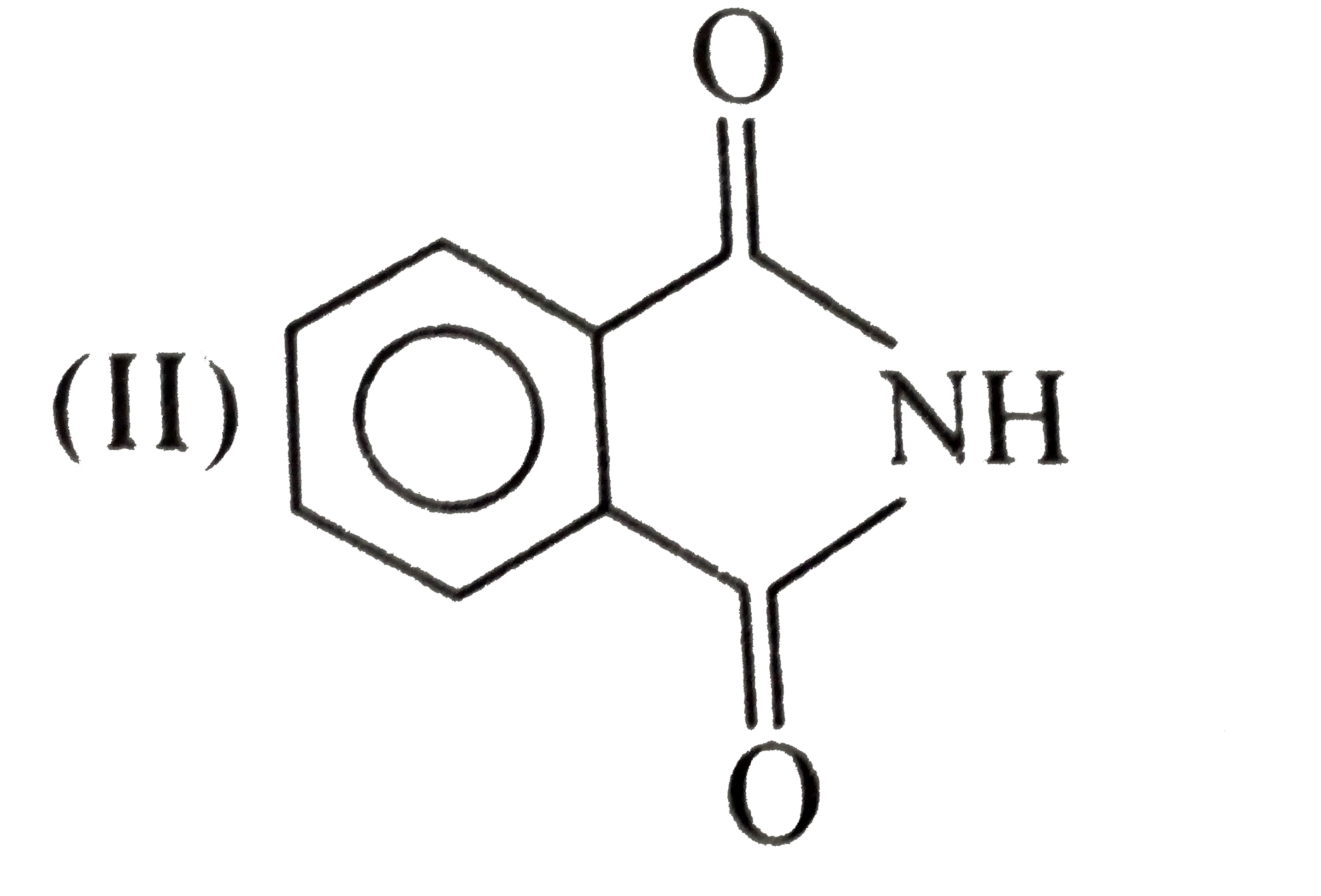Give the order of acidic character of the following :
(i) (a)
(b)
( c)
To determine the order of acidic character of the compounds Ph3CH, Ph2CH2, and PhCH3, we will analyze the stability of the corresponding carbanions formed after deprotonation of each compound.
Step 1: Identify the Compounds
The compounds given are:
1. Ph3CH (Triphenylmethane)
2. Ph2CH2 (Diphenylmethane)
3. PhCH3 (Benzylmethane)
Step 2: Understand Deprotonation
When we talk about acidity, we refer to the ability of a compound to donate a proton (H⁺). The deprotonation of these compounds leads to the formation of carbanions:
- For Ph3CH: Ph3C−
- For Ph2CH2: Ph2C−
- For PhCH3: PhC−
Step 3: Analyze Carbanion Stability
The stability of a carbanion is greatly influenced by the ability of the surrounding groups to delocalize the negative charge:
- Triphenylmethane (Ph3C−): The negative charge can be delocalized over three phenyl groups, providing significant resonance stabilization.
- Diphenylmethane (Ph2C−): The negative charge can be delocalized over two phenyl groups, offering moderate resonance stabilization.
- Benzylmethane (PhC−): The negative charge can only be delocalized over one phenyl group, resulting in the least resonance stabilization.
Step 4: Order of Acidity
Since the stability of the carbanion increases with the number of phenyl groups that can delocalize the negative charge, we can conclude:
- Ph3CH is the most acidic (most stable carbanion)
- Ph2CH2 is less acidic than Ph3CH
- PhCH3 is the least acidic
Thus, the order of acidic character is:
Ph3CH>Ph2CH2>PhCH3
The compounds given are:
1. Ph3CH (Triphenylmethane)
2. Ph2CH2 (Diphenylmethane)
3. PhCH3 (Benzylmethane)
When we talk about acidity, we refer to the ability of a compound to donate a proton (H⁺). The deprotonation of these compounds leads to the formation of carbanions:
- For Ph3CH: Ph3C−
- For Ph2CH2: Ph2C−
- For PhCH3: PhC−
The stability of a carbanion is greatly influenced by the ability of the surrounding groups to delocalize the negative charge:
- Triphenylmethane (Ph3C−): The negative charge can be delocalized over three phenyl groups, providing significant resonance stabilization.
- Diphenylmethane (Ph2C−): The negative charge can be delocalized over two phenyl groups, offering moderate resonance stabilization.
- Benzylmethane (PhC−): The negative charge can only be delocalized over one phenyl group, resulting in the least resonance stabilization.
Since the stability of the carbanion increases with the number of phenyl groups that can delocalize the negative charge, we can conclude:
- Ph3CH is the most acidic (most stable carbanion)
- Ph2CH2 is less acidic than Ph3CH
- PhCH3 is the least acidic
Ph3CH>Ph2CH2>PhCH3
Topper's Solved these Questions
- GENERAL ORGANIC CHEMISTRYBOOK - CENGAGE CHEMISTRY ENGLISHCHAPTER - GENERAL ORGANIC CHEMISTRYEXERCISE - Concept
17 Videos
- GENERAL ORGANIC CHEMISTRYBOOK - CENGAGE CHEMISTRY ENGLISHCHAPTER - GENERAL ORGANIC CHEMISTRYEXERCISE - Comprehension
20 Videos
- GENERAL ORGANIC CHEMISTRYBOOK - CENGAGE CHEMISTRY ENGLISHCHAPTER - GENERAL ORGANIC CHEMISTRYEXERCISE - Solved Example
18 Videos
- CLASSIFICATION AND NOMENCLATURE OF ORGANIC COMPOUNDSBOOK - CENGAGE CHEMISTRY ENGLISHCHAPTER - CLASSIFICATION AND NOMENCLATURE OF ORGANIC COMPOUNDSEXERCISE - Analytical and Descriptive Type
3 Videos
- HYDROGEN, WATER AND HYDROGEN PEROXIDEBOOK - CENGAGE CHEMISTRY ENGLISHCHAPTER - HYDROGEN, WATER AND HYDROGEN PEROXIDEEXERCISE - Subjective Archive (Subjective)
3 Videos
Similar Questions
Give the decreasing order of acidic character of the following :
(1) Benzene
(2) CH3OH
(3) H2O
(4) CH3SH
View SolutionGive the order of the stabilities of the following :
(i) (a) PhCH⊕2
(b) Ph2C⊕H
( c) Me2Ch⊕
(d) Me3C⊕
( e) C2H⊕5
(f) Ch⊕3
View SolutionThe decreasing order of acidic character of the following is :
(I) CH3SH
(II) CH3OH
(III) H2O
(IV) EtOH.
View SolutionGive the order of reactivityh towards SN1 reaction of the following:
i. ClCH2CH=CH2
ii. CH3CH2CH2Cl
iii. CH3CH=CHCl
View SolutionThe decreasing order of acidic character of the following is:
(I) Ph−O∣∣C−NH2 (II) (III) PhNH2
(III) PhNH2
View SolutionGive the decreasing order of the stabilities of the following free radicals :
(a) Ph.CHPh
(b) Ph.CHCH=CH2
( c) Me.CHMe
(d) Ph.CHMe
( e) MeCH=CHCH2.CH2
(f) Et−.C−Me2.
View SolutionExplain the following :
(a) In gaseous phase, the acidic characters of the following are :
CH3CH2COOH(I)>CH3COOH(II)
View SolutionGive the decreasing order of acidic character.
(a) NO2CH2OH,
(b) C1CH2COOH,
(c) HCOOH,
(d) CH3COOH,
( e) CH3OH
View SolutionPredict the order of reactivity of the following halides with (a) NaI in acetone
(b) aq.alcoholic AgNO3
(i) CH3Br
(ii) C2H5Br
(iii) PhCH2Br
(iv) .
.
View SolutionGive IUPAC names of the following:
PhCH2CH2COOH
View Solution
